
Pope Alexander I was the bishop of Rome from about 108/109 to 116/119. Some believe he suffered martyrdom under the Roman emperor Trajan or Hadrian.
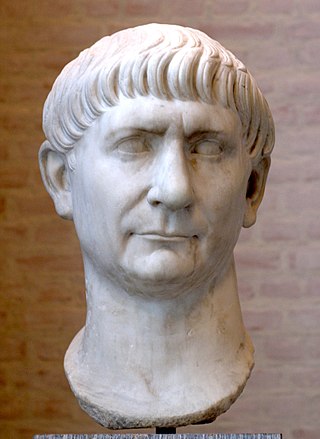
Trajan was a Roman emperor from AD 98 to 117, remembered as the second of the Five Good Emperors of the Nerva–Antonine dynasty. He was a philanthropic ruler and a successful soldier-emperor who presided over one of the greatest military expansions in Roman history, during which, by the time of his death, the Roman Empire reached its maximum territorial extent. He was given the title of Optimus by the Roman Senate.
AD 68 (LXVIII) was a leap year starting on Friday of the Julian calendar. At the time, it was known as the Year of the Consulship of Silius Italicus and Trachalus, or the start of the Year of the Four Emperors. The denomination AD 68 for this year has been used since the early medieval period, when the Anno Domini calendar era became the prevalent method in Europe for naming years. These are now used throughout the world.

The 70s was a decade that ran from January 1, AD 70, to December 31, AD 79.

The 80s was a decade that ran from January 1, AD 80, to December 31, AD 89.

The 90s was a decade that ran from January 1, AD 90, to December 31, AD 99.

The 100s was a decade that ran from January 1, AD 100, to December 31, AD 109.
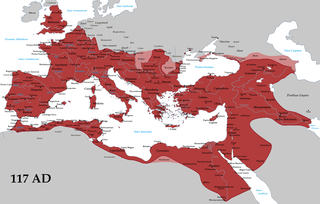
The 110s was a decade that ran from January 1, AD 110, to December 31, AD 119.

The 120s was a decade that ran from January 1, AD 120, to December 31, AD 129.
The 320s decade ran from January 1, 320, to December 31, 329.

The 130s was a decade that ran from January 1, 130, to December 31, 139.
Year 105 (CV) was a common year starting on Wednesday of the Julian calendar. At the time, it was known as the Year of the Consulship of Candidus and Iulius. The denomination 105 for this year has been used since the early medieval period, when the Anno Domini calendar era became the prevalent method in Europe for naming years.
Year 116 (CXVI) was a leap year starting on Tuesday of the Julian calendar. At the time, it was known as the Year of the Consulship of Lamia and Vetus. The denomination 116 for this year has been used since the early medieval period, when the Anno Domini calendar era became the prevalent method in Europe for naming years.
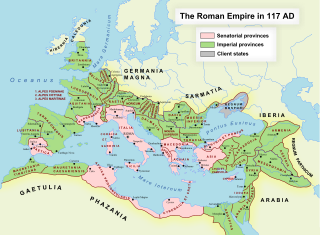
Year 117 (CXVII) was a common year starting on Thursday of the Julian calendar. At the time, it was known as the Year of the Consulship of Niger and Apronianus. The denomination 117 for this year has been used since the early medieval period, when the Anno Domini calendar era became the prevalent method in Europe for naming years.

The Kitos War was a Jewish uprising in the province of Judaea during the late 110s CE. Ancient Jewish sources date it to 52 years after Vespasian's war and 16 years before the Bar Kokhba revolt (132–136).

Lusius Quietus was a Roman Berber general and 11th legate of Judaea from 117. He was the principal commander against the Jewish rebellion known as the Kitos War. As both a general and a highly acclaimed commander, he was notably one of the most accomplished Berber statesmen in ancient Roman history. After the death of the emperor Trajan, Quietus was murdered or executed, possibly on the orders of Trajan's successor Hadrian.

The history of the Jews in the Roman Empire traces the interaction of Jews and Romans during the period of the Roman Empire. A Jewish diaspora had migrated to Rome and to the territories of Roman Europe from the land of Israel, Anatolia, Babylon and Alexandria in response to economic hardship and incessant warfare over the land of Israel between the Ptolemaic and Seleucid empires from the 4th to the 1st centuries BC. In Rome, Jewish communities thrived economically. Jews became a significant part of the Roman Empire's population in the first century AD, with some estimates as high as 7 million people; however, this estimation has been questioned.

Trajan's Parthian campaign was engaged by Roman emperor Trajan in 115 against the Parthian Empire in Mesopotamia. The war was initially successful for the Romans, but a series of setbacks, including wide-scale Jewish uprisings in the Eastern Mediterranean and North Africa and Trajan's death in 117, ended in a Roman withdrawal.
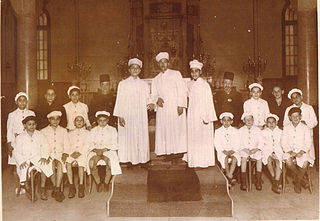
The history of the Jews in Alexandria dates back to the founding of the city by Alexander the Great in 332 BCE. Jews in Alexandria played a crucial role in the political, economic, cultural and religious life of Hellenistic and Roman Alexandria, with Jews comprising about 35% of the city's population during the Roman Era.
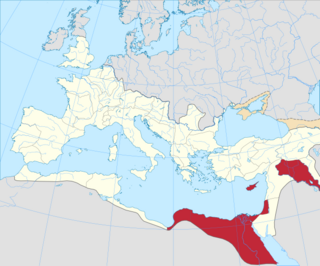
The term "Diaspora Revolt", also known as the Trajanic Revolt and sometimes as the SecondJewish–RomanWar, refers to a series of uprisings that occurred in Jewish diaspora communities across the eastern provinces of the Roman Empire during the final years of Trajan's reign. These revolts occurred while the emperor was engaged in his Parthian campaign in Mesopotamia, which provided a favorable opportunity. The ancient sources do not specify the exact motivations, but they were likely influenced by the destruction of the Second Temple by the Romans in 70 CE, long-standing tensions between Jews and Greeks, the Fiscus Judaicus tax, messianic expectations, and hopes for a return to Judaea.















